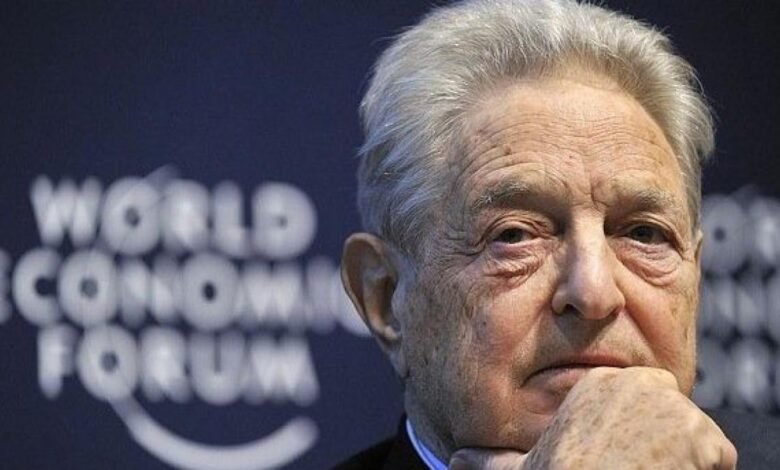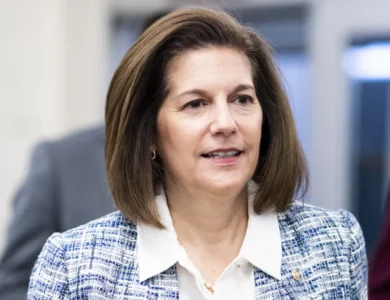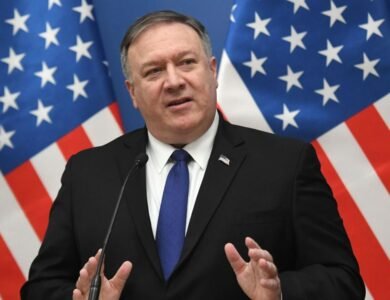
George Soros, one of the world’s most recognizable and controversial billionaire investors, has left an indelible mark on global financial markets and society at large. Born György Schwartz in Budapest in 1930, this Hungarian-American financier has built a legacy that extends far beyond his remarkable investment success. With a net worth exceeding $8 billion, Soros has become synonymous with both extraordinary market speculation and unprecedented philanthropic endeavors.
Throughout his illustrious career spanning over six decades, George Soros has demonstrated an uncanny ability to identify and capitalize on market inefficiencies while simultaneously challenging established political and economic systems. His investment philosophy, rooted in his theory of reflexivity, has generated billions in profits and earned him the moniker “The Man Who Broke the Bank of England” following his legendary bet against the British pound in 1992.
Beyond his financial achievements, Soros has emerged as one of history’s most significant philanthropists, having donated over $32 billion through his Open Society Foundations. This dual identity as both a profit-driven investor and a socially conscious activist has made him a polarizing figure, attracting both admiration and criticism from different quarters of society.
This comprehensive exploration delves into the multifaceted world of George Soros, examining his investment strategies, market influence, philanthropic impact, and the controversies that have surrounded his activities. From his early days as a refugee fleeing Nazi-occupied Hungary to his current status as a global influencer, Soros‘ story represents a unique intersection of finance, politics, and social change.
Early Life and Educational Foundation
Surviving War-Torn Europe
George Soros‘ formative years were shaped by the tumultuous events of World War II. Born into a middle-class Jewish family in Budapest, young György experienced firsthand the horrors of Nazi occupation and the subsequent Soviet control of Hungary. His father, Tivadar Soros, was instrumental in teaching him survival skills and the importance of adaptability – lessons that would prove invaluable in his future investment career.
The Soros family’s experience during the war, including their use of false identities to survive the Holocaust, instilled in George a deep understanding of political instability and its market implications. This early exposure to regime change and economic upheaval would later inform his investment philosophy and his ability to anticipate political risk in global markets.
Academic Pursuits and Philosophical Foundations
After emigrating to England in 1947, Soros enrolled at the London School of Economics, where he encountered the philosophical works of Karl Popper. Popper’s concepts of open society and the fallibility of human knowledge profoundly influenced Soros‘ worldview and would later become central to both his investment approach and his philanthropic mission.
The academic environment at LSE exposed Soros to diverse economic theories and market dynamics, laying the groundwork for his future success as a hedge fund manager. His studies in philosophy, particularly his focus on the relationship between thinking and reality, would eventually evolve into his famous theory of reflexivity.
Investment Philosophy and the Theory of Reflexivity
Understanding Market Psychology
George Soros‘ investment philosophy is fundamentally built upon his theory of reflexivity, which challenges the efficient market hypothesis that dominated financial thinking for decades. According to Soros, markets are not always rational or efficient; instead, they are influenced by the perceptions and biases of participants, creating feedback loops that can drive prices away from their fundamental values.
This reflexivity theory suggests that investors‘ perceptions can actually change the underlying fundamentals of what they’re investing in. Soros argues that market participants operate with imperfect information and that their collective actions, based on these imperfect perceptions, can create market trends that become self-reinforcing until they reach an unsustainable extreme.
Boom-Bust Cycles and Market Timing
The practical application of reflexivity theory has enabled Soros to identify and profit from boom-bust cycles across various asset classes and geographical regions. His investment strategy involves recognizing when market sentiment has pushed prices to unsustainable levels, then positioning his portfolio to benefit from the inevitable correction.
Soros‘ approach to market timing requires not only analytical skill but also psychological insight into investor behavior. He has demonstrated remarkable ability to maintain contrarian positions during periods of extreme market volatility, often doubling down on his convictions when others are retreating from the markets.
The Quantum Fund and Early Success
Building a Hedge Fund Empire
In 1970, George Soros co-founded the Quantum Fund with Jim Rogers, establishing what would become one of the most successful hedge funds in history. The fund’s name reflected Soros‘ belief in the uncertainty principle from quantum mechanics, which aligned with his views on the inherent unpredictability of financial markets.
Under Soros‘ management, the Quantum Fund achieved extraordinary returns, averaging over 30% annually for more than three decades. This performance was achieved through a combination of macro investing, currency speculation, and strategic positions in global equity markets. The fund’s success established Soros as one of the premier money managers of his generation.
Global Macro Investment Strategy
The Quantum Fund‘s investment approach focused on global macro strategies, taking large positions based on anticipated movements in currencies, commodities, interest rates, and stock indices. This macro investing style required deep understanding of economic fundamentals, political developments, and central bank policies across multiple countries.
Soros‘ ability to synthesize complex global information and translate it into profitable investment decisions set him apart from traditional fund managers. His willingness to take concentrated positions and use significant leverage amplified both his returns and his influence on global markets.
Breaking the Bank of England: The Legendary Trade
The 1992 Currency Crisis
Perhaps no single trade better exemplifies George Soros‘ market influence than his assault on the British pound in September 1992. Recognizing that the UK’s membership in the European Exchange Rate Mechanism (ERM) was unsustainable given the country’s economic fundamentals, Soros built a massive short position against the pound sterling.
The trade, which earned him an estimated $1 billion profit in a single day, demonstrated the power of currency speculation and established Soros as a force capable of challenging entire governments. The Bank of England spent billions trying to defend the pound before ultimately capitulating and withdrawing from the ERM, earning Soros his legendary nickname.
Market Impact and Systemic Influence
The pound sterling crisis illustrated how large hedge funds could influence monetary policy and challenge fixed exchange rate regimes. Soros‘ success in this trade showcased the potential for private investors to profit from macroeconomic imbalances while simultaneously exposing the vulnerabilities in government attempts to maintain artificial currency values.
This event marked a turning point in global finance, highlighting the increasing influence of hedge funds and institutional investors in international markets. The trade also demonstrated Soros‘ ability to identify and exploit systemic risks within financial systems.
Philanthropic Legacy and Open Society Foundations
Commitment to Social Change
Parallel to his investment success, George Soros has built an unparalleled philanthropic legacy through his Open Society Foundations. Founded in 1979, these foundations have distributed over $32 billion to support democracy, human rights, and social justice causes worldwide. The name reflects Soros‘ commitment to Karl Popper’s concept of open society – one characterized by tolerance, transparency, and democratic governance.
The Open Society Foundations operate in more than 120 countries, supporting initiatives ranging from education and public health to criminal justice reform and media freedom. Soros‘ philanthropic approach emphasizes systemic change rather than traditional charity, seeking to address root causes of social problems rather than merely treating symptoms.
Focus Areas and Global Impact
Soros‘ philanthropic efforts have focused on several key areas where he believes open society principles can make the greatest difference. These include supporting civil society organizations in emerging democracies, promoting educational opportunities for marginalized communities, and advancing criminal justice reform in the United States.
The foundations have played crucial roles in supporting democratic transitions in Eastern Europe following the fall of communism, providing scholarships for students from disadvantaged backgrounds, and defending press freedom in countries where media independence is under threat. This comprehensive approach to philanthropy reflects Soros‘ belief that sustainable social change requires addressing multiple interconnected issues simultaneously.
Controversies and Criticisms
Political Influence and Conspiracy Theories
George Soros‘ significant political donations and advocacy work have made him a lightning rod for criticism and conspiracy theories. His support for progressive causes and Democratic candidates in the United States has drawn fierce opposition from conservative politicians and media outlets, who often portray him as wielding excessive influence over political processes.
The billionaire investor has faced particularly intense scrutiny for his role in supporting district attorney candidates who favor criminal justice reform, with critics arguing that his influence undermines local democratic processes. These controversies have been amplified by antisemitic conspiracy theories that falsely attribute vast global influence to Soros.
Market Manipulation Allegations
Throughout his career, Soros has faced allegations of market manipulation and destabilizing currency speculation. Critics argue that his large positions and public statements can artificially influence market prices, potentially harming smaller investors and entire economies. The 1997 Asian financial crisis saw Soros accused of contributing to economic instability in several countries through his trading activities.
However, defenders argue that Soros simply identifies and exploits existing market inefficiencies and macroeconomic imbalances, and that blaming him for broader systemic problems misses the underlying causes of financial instability. The debate over his market influence continues to shape discussions about hedge fund regulation and systemic risk.
Current Activities and Continued Influence
Modern Investment Approach
Today, George Soros remains active in global markets through Soros Fund Management, though he has stepped back from day-to-day trading operations. The firm continues to manage approximately $25 billion in assets, focusing on long-term investments and maintaining Soros‘ macro investment philosophy while adapting to changing market conditions.
Recent investment activities have included significant positions in technology companies, renewable energy, and emerging market opportunities. The fund has also maintained its traditional focus on currency trading and global macro strategies, though with perhaps less leverage and concentration than during Soros‘ most aggressive trading years.
Ongoing Philanthropic Commitments
The Open Society Foundations continue to operate as one of the world’s largest philanthropic networks, with annual giving exceeding $600 million. Recent initiatives have focused on addressing democratic backsliding in established democracies, supporting refugees and migrants, and combating the rise of authoritarianism globally.
Soros has also increased his focus on climate change and environmental issues, recognizing these as fundamental threats to open society values. His foundations are supporting research, advocacy, and policy initiatives aimed at accelerating the transition to sustainable energy and addressing the social impacts of climate change.
Conclusion
George Soros represents a unique figure in modern finance and philanthropy, whose influence extends far beyond traditional investment management. His reflexivity theory has challenged conventional market wisdom, while his trading success has demonstrated the potential for individual investors to influence global markets. Simultaneously, his philanthropic work has supported democratic institutions and social justice causes worldwide.
The billionaire investor‘s legacy is complex and often controversial, reflecting the tensions between private wealth and public influence in democratic societies. Whether viewed as a visionary investor and philanthropist or as an excessive concentration of power in private hands, Soros has undoubtedly shaped both financial markets and global civil society in profound ways.
As markets continue to evolve and global challenges mount, George Soros‘ example of using financial success to promote social change offers both inspiration and cautionary lessons about the responsibilities that come with extraordinary wealth and influence. His story remains a compelling case study in the intersection of finance, politics, and philanthropy in the modern world.
Read More: Lara Trump A Closer Look at the Influential Figure







